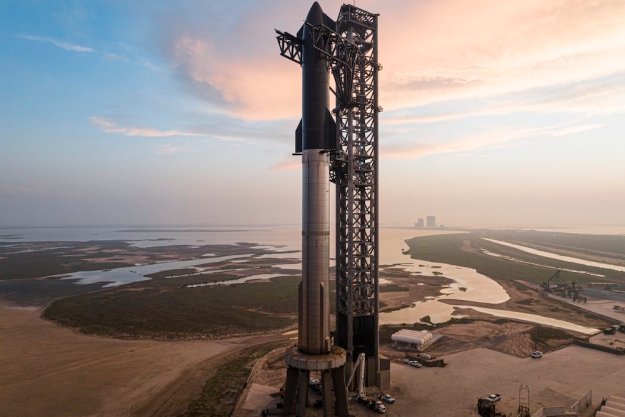NASA is aiming to perform the first four-engine hot fire test of its Space Launch System (SLS) rocket on Saturday, January 16. (Check out NASA’s movie-like trailer for this weekend’s test above.)
Success will take the space agency a big step toward its crewless Artemis I mission to the moon just 11 months from now, ahead of a planned crewed mission that would put the first woman and next man on the lunar surface before the end of the decade.
Saturday’s test at NASA’s Stennis Space Center near Bay St. Louis, Mississippi, will be the final one in what’s known as the Green Run, a series of eight tests that puts a rocket and all of its associated hardware through its paces. Earlier Green Run tests evaluated the rocket’s avionics systems, propulsion systems, and hydraulic systems.
According to NASA, the SLS is capable of producing a maximum 8.8 million pounds of thrust, “exerting more power than any rocket ever.” This means we can expect to see a spectacular display of booster power this weekend as all four of the SLS rocket’s RS-25 engines fire up together for a full eight minutes in a ground-based test designed to simulate the core stage’s launch performance.
Assuming Saturday’s test goes according to plan, the SLS rocket’s core stage will then be refurbished and transported by barge to NASA’s Kennedy Space Center in Florida. There, it will be assembled with the other parts of the rocket, including the Orion spacecraft, in preparation for the highly anticipated Artemis I mission.
“The next few days are critical in preparing the Artemis I rocket stage, the B-2 Test Stand at NASA’s Stennis Space Center, and the test team for the finale of the Green Run test series,” said Barry Robinson, project manager for SLS core stage Green Run testing at Stennis. “The upcoming Green Run hot fire test is the culmination of a lot of hard work by this team as we approach a key milestone event for NASA’s Artemis missions.”
It’s not currently clear if NASA plans to livestream the hot fire test. We’ll be sure to update this article if it releases any such details. Failing that, the agency is almost certain to post a video of the test soon after it takes place.
Editors' Recommendations
- Watch SpaceX fire Starship’s Raptor engines ahead of 4th test flight
- SpaceX’s mighty Starship rocket stacked for 3rd test flight
- Five rocket launches to look out for in 2024
- Watch SpaceX’s dramatic drone view of Starship test ahead of 3rd flight
- NASA astronauts sign their moon rocket


